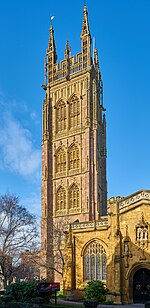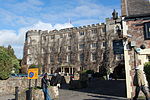The Brewhouse Theatre & Arts Centre

Taunton Brewhouse (previously The Brewhouse) is the largest theatre and arts centre in Taunton, the county town of Somerset, England. The building opened on 28 March 1977, on the banks of the River Tone, and offers a purpose-built 352-seat auditorium, a supporting 60-seat versatile studio space for performances, classes and conferences, and an exhibition space. It hosts a programme of live professional and amateur theatre productions; live folk, rock, and pop music; comedians; popular and independent cinema; live broadcasts from major international venues, such as London's National Theatre and The Royal Opera House; and visual arts exhibitions. Its first professional production was Alan Ayckbourn’s The Norman Conquests, starring the then unknown David Jason.
Excerpt from the Wikipedia article The Brewhouse Theatre & Arts Centre (License: CC BY-SA 3.0, Authors, Images).The Brewhouse Theatre & Arts Centre
Coal Orchard,
Geographical coordinates (GPS) Address Website External links Nearby Places Show on map
Geographical coordinates (GPS)
| Latitude | Longitude |
|---|---|
| N 51.0181 ° | E -3.1022 ° |
Address
The Brewhouse Theatre & Arts Centre
Coal Orchard
TA1 1JL , North Town
England, United Kingdom
Open on Google Maps









